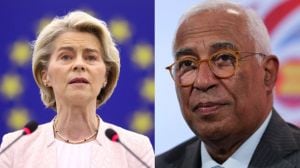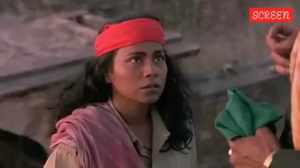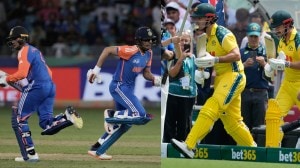Shyamlal Yadav is one of the pioneers of the effective use of RTI for investigative reporting. He is a member of the Investigative Team. His reporting on polluted rivers, foreign travel of public servants, MPs appointing relatives as assistants, fake journals, LIC’s lapsed policies, Honorary doctorates conferred to politicians and officials, Bank officials putting their own money into Jan Dhan accounts and more has made a huge impact. He is member of the International Consortium of Investigative Journalists (ICIJ). He has been part of global investigations like Paradise Papers, Fincen Files, Pandora Papers, Uber Files and Hidden Treasures. After his investigation in March 2023 the Metropolitan Museum of Art, New York returned 16 antiquities to India. Besides investigative work, he keeps writing on social and political issues. ... Read More
Tribhuvan Narain Singh, sixth UP CM with shortest tenure so far
A Congress leader, Singh, who had gone with the Congress (O) when the party split in 1969, was pitchforked into the UP CM’s position on October 18, 1970, by Opposition parties, but failed to win his Assembly seat within six months and had to resign after just a 167-day stint
 A Varanasi-based Thakur, Tribhuvan Narain Singh had landed the CM’s job in a dramatic turn of events. (Photo: Facebook @TribhuvanNarainSingh)
A Varanasi-based Thakur, Tribhuvan Narain Singh had landed the CM’s job in a dramatic turn of events. (Photo: Facebook @TribhuvanNarainSingh)Accounting for 80 of the Lok Sabha’s 543 seats, and a 403-member Assembly, Uttar Pradesh, with its over 15 crore voters, is India’s most politically significant state. Since January 25, 1950, when the United Provinces was renamed as Uttar Pradesh, the state – through 17 Assembly elections — has determined the course of national politics, throwing up a legion of stalwarts, chief ministers, and Prime Ministers. Of its 21 CMs though, only Yogi Adityanath, Akhilesh Yadav and Mayawati have completed a full five-year term, reflecting the intense volatility of its politics. In the line-up of CMs, also lies the truth about the state’s caste equations. Ten of its 21 CMs have been Brahmins or Thakurs. The remaining include three Yadavs, three Baniyas, one Lodh, one Jat, one Kayasth, one Dalit and one Sindhi. A series looking at UP’s political history and changes through its CMs
***
Uttar Pradesh’s sixth chief minister Tribhuvan Narain Singh could remain in his post only for 167 days, which has been the shortest chief ministerial stint in the state so far. Singh was till then the first such UP leader who had never contested any state Assembly polls prior to taking oath as the CM. Subsequently, he also could not win his Assembly seat in a by-election within six months and had to thus resign.
A Varanasi-based Thakur, Singh had landed the CM’s job in a dramatic turn of events. The UP government led by Chaudhary Charan Singh in his second stint as the CM, had lost the majority in the Assembly, following which the governor asked him to resign that led to the imposition of President’s rule in the state on October 1, 1970. Soon afterwards, however, parties like Chaudhary Charan’s Bhartiya Kranti Dal (BKD) and the Bhartiya Jan Sangh (BJS), among others, zeroed in on T N Singh as their CM candidate and presented their claim before the governor with the support of 257 MLAs. As a Rajya Sabha member, Singh, a Congress leader, was then active in national politics and had gone with the Congress (O) faction when the party split in 1969. He was sworn in as the UP CM on October 18, 1970.
Amid increasing Congress fragmentation and the formation of non-Congress governments, UP politics was then in the throes of intense political upheaval and volatility. The 5th UP Assembly (February 1969 to March 1974) saw the tenures of five CMs (CB Gupta, Chaudhary Charan Singh, T N Singh, Kamlapati Tripathi and HN Bahuguna) interspersed with two brief spells of President’s rule.
T N Singh won the Lok Sabha polls as a Congress candidate in 1952 from the Banaras (now Varanasi)-East constituency and in 1957 from the adjoining Chandauli seat. He was also elected as a Rajya Sabha member in 1965 and 1970. He was inducted into the Lal Bahadur Shashtri Cabinet, where he served as Union minister of heavy engineering and industry between July 1964 and January 1966.
As Singh became the UP CM, the current CM Yogi Adityanath’s predecessor Mahant Avaidya Nath at Goraksha Peeth vacated his Maniram Assembly seat to enable the former to contest the Maniram bypoll and become a member of the House. Avaidya Nath had won from this seat in 1962 (on the Hindu Mahasabha ticket), 1967 (Independent) and 1969 (Hindu Mahasabha), although he had also lost it once in 1957 as an Independent candidate.
The campaign for the bypoll in March 1971 took an interesting turn as then Prime Minister Indira Gandhi went there to campaign for Congress candidate R K Dwivedi, who managed to defeat the CM. Dwidevi was defeated by Avaidya Nath in the 1969 polls. The historic bypoll triumph over a sitting UP CM came as shot in the arm for the Indira-led Congress.
A new leader, Narain Dutt Tiwari, was then rising in UP politics. After leaving the Praja Socialist Party (PSP) following his defeat in the 1962 Assembly polls, Tiwari had joined the Congress in 1963 and became its MLA in 1967, emerging as the face of then Opposition Congress in the state.
Tiwari had kept his guns trained on the T N Singh government from the moment it was formed. Attacking CM Singh in the state Assembly on December 7, 1970, he said: “The gentleman (T N Singh) who is sitting on the chair of Leader of the House was a member of the Rajya Sabha and he is still a member of the Rajya Sabha. Governor has administered him oath as CM and, therefore, for the time being he is chief minister…, (but) we don’t consider him as chief minister.”
Urging the Speaker to stop the proceedings of the Assembly, Tiwari said Singh could be the CM only if he is a member of either Houses of UP. In his ruling next day, on December 8, 1970, the Speaker said Singh will continue to be the Leader of the House and the CM.
However, following his stunning defeat in the Maniram bypoll, it was endgame for Singh. This was manifested subsequently during the discussion on the motion of thanks on the governor’s address in the UP Assembly on March 30, 1971, when the Singh government lost in voting on an amendment to the motion moved by N D Tiwari, which was passed by a majority of members. Singh then told the House, “I have decided to send my resignation to governor. My submission is it will be better if Assembly’s sitting scheduled for tomorrow be postponed.”
Born in August 1904, Singh had been associated with the Congress since the beginning of his career, during which he also worked as a journalist and professor. When he took the oath of office as the UP CM, only two ministers were sworn with him. Amid his government’s continuing instability, he rejigged his cabinet thrice in less than six months, on November 4, 11 and 18 in 1970. Throughout his brief tenure, his government had been dogged by multiple political and legal challenges.
After his resignation as the CM, Singh was later appointed as the West Bengal governor during the Janata Party government. He passed away in Varanasi on August 3, 1982.



- 01
- 02
- 03
- 04
- 05





























